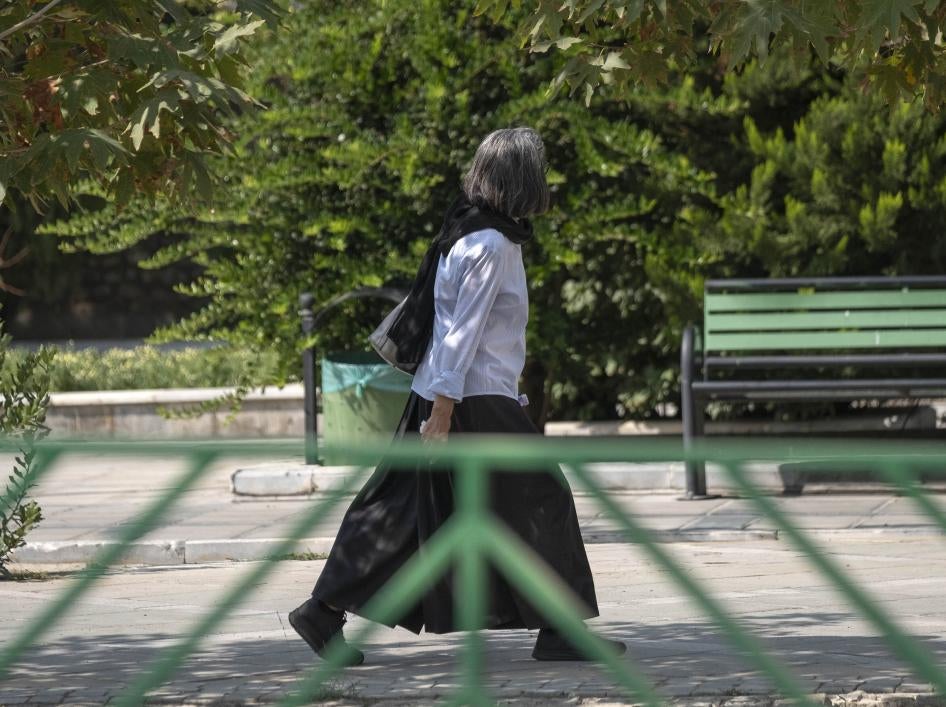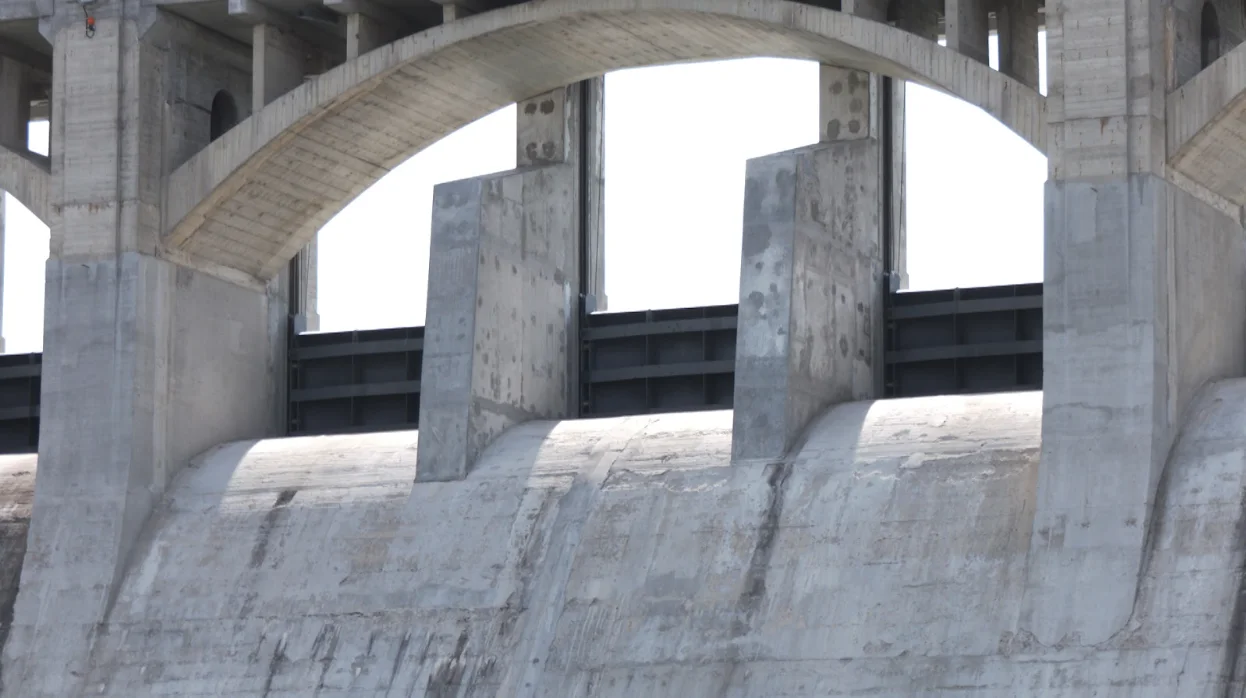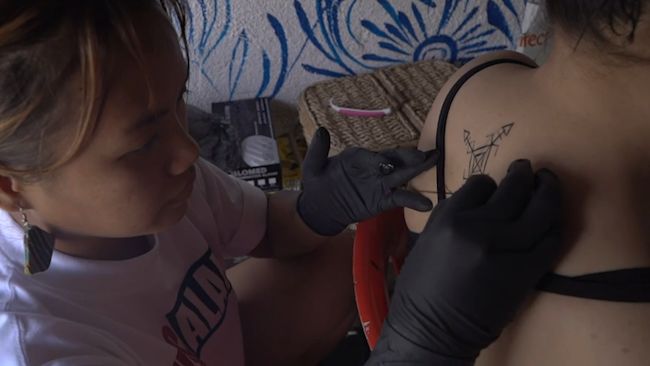Robyn Dixon and Mary Ilyushina
Wagner mercenary chief Yevgeniy Prigozhin has resurfaced for the first time since his mutiny, and declared that his motive was to save the private militia from being subsumed into the Russian military – not to topple President Vladimir Putin.
Prigozhin, who did not disclose his whereabouts, said he ordered the rebellion after Russia's military killed 30 Wagner fighters in a missile strike on one of the militia's camps, and he said he accepted a deal to avoid prosecution and move to Belarus because it would allow Wagner to continue its operations there.
Whatever his intentions, however, Prigozhin's brazen revolt confronted Putin with the fiercest challenge he has faced in more than 23 years as Russia's supreme leader, and it laid bare bitter divisions over the handling of the war in Ukraine that could have serious repercussions on the battlefield.
Ukrainians remain staunchly unified in the defence of their sovereign territory, and the Ukrainian military on Monday claimed further progress in its counteroffensive to drive out occupying Russian forces, by taking control of Rivnopil, the ninth village it has recaptured this month.
Speaking in an 11-minute audio address posted on Telegram on Monday, Prigozhin said Wagner fighters were strongly opposed to signing contracts with the Russian Defence Ministry – as they had been ordered to do by July 1 – because it would have effectively dismantled the group. Wagner had decided to hand back its equipment to the Defence Ministry when the missile strike occurred, he claimed.
Prigozhin expressed regret about Russian aircrews killed by Wagner during Saturday's rebellion, "but these assets were dropping bombs and delivering missile strikes," he said.

AP
Yevgeny Prigozhin, the owner of the Wagner Group military company, looks out from a military vehicle on a street in Rostov-on-Don, Russia, Saturday, June 24, 2023, leaving an area of the headquarters of the Southern Military District.
He boasted that Wagner was perhaps the "most experienced and combat-ready unit in Russia, and possibly in the world" and had performed a huge number of tasks in the interests of the Russian state, in Africa, the Middle East "and around the world".
"Recently, this unit has achieved good results in Ukraine," he said, adding that Wagner had received an outpouring of support from Russians in Saturday's revolt, which he called a "march for justice".
While Prigozhin issued his defiant statement, Russia's embattled leadership tried to demonstrate control on Monday after the bruising, chaotic mutiny by airing a video of Defence Minister Sergei Shoigu visiting a command post. The Kremlin released video of a recorded address by President Vladimir Putin to young engineers.
It was not clear when the video address by Putin was recorded, leaving questions about his whereabouts still swirling as Russians grappled with the aftermath of the crisis. Other key figures in the crisis remained out of sight.
Shoigu's exact whereabouts and the timing of the video released by the Defence Ministry also were not clear. Russian media reported that it was prerecorded, probably on Friday, before the Wagner rebellion.
By contrast, Ukrainian President Volodymyr Zelensky visited his troops near the front lines in eastern Ukraine on Monday and his office quickly released video of him greeting soldiers.

VADIM SAVITSKY
In this handout photo released by Russian Defence Ministry, Russian Defence Minister Sergei Shoigu attends a session of the Council of Defence Ministers of the Collective Security Treaty Organisation in Minsk, Belarus, in May 2023.
As a state of emergency in the Russian capital was lifted, Russians were left trying to make sense of Putin's reversal from his threat of tough action against what he called "treason," and what it could mean in the near term, especially for the ongoing war in Ukraine, and in the longer term for stability in the country and for Putin's political future.
State-owned media, meanwhile, reported Monday that the insurrection charges against Prigozhin had not yet been rescinded. The Kremlin on Saturday had announced that the charges would be dropped as part of the deal in which Prigozhin agreed to halt his military advance on Moscow and leave Russia for Belarus.
Key questions about the deal remained unanswered, and messaging from Russian officials about Wagner's future appeared confused, amid signs that the militia would be allowed to continue to function, despite calls for it to be curbed.
Until his Telegram post, Prigozhin had not been heard from since leaving the southern city of Rostov-on-Don on Saturday to cheers and shouts of support.
Russian news outlet Verstka reported that a Wagner base for 8000 soldiers was being constructed in Belarus, in the Mogilev region southeast of Minsk. The report could not be confirmed.
Putin was seen during his emergency address to the nation on Saturday amid the crisis, but there was speculation that he might have left Moscow for one of his residences northwest of the capital, after two planes from Russia's special fleet used by Putin departed the city that day.
Kremlin spokesman Dmitry Peskov said that the president was "working in the Kremlin" and that the two planes returned to Moscow on Sunday evening, Russian news outlet Agentstvo reported.
Russian Prime Minister Mikhail Mishustin called for moves to strengthen Russian unity in the wake of the crisis, but he insisted that the Russian government worked "smoothly and clearly" during the crisis.
"It is important to ensure the sovereignty of the Russian Federation and the security of citizens, taking into account recent events," Mishustin said at a meeting of deputy prime ministers Monday. "It is necessary to consolidate society against the backdrop of an attempted armed rebellion."

In this handout photo released by Russian Foreign Ministry Press Service, Russian Foreign Minister Sergey Lavrov speaks during his meeting with Li Hui, China's special envoy for Eurasian affairs, in Moscow, Russia, in May 2023.
Foreign Minister Sergei Lavrov said Wagner would continue operating in Mali and the Central African Republic, calling Wagner operatives there "instructors". Wagner has political advisers and influence operations in many African countries and provides security in Mali and the Central African Republic.
Lavrov said the US ambassador to Russia, Lynne Tracy, had spoken with Russian government representatives Sunday and conveyed Washington's view that the events were Russia's internal affair and its hope that Russian nuclear weapons remained secure.
"It was especially emphasised: The United States proceeds from the fact that everything that happens is an internal affair of the Russian Federation," Lavrov said in an interview with the state-controlled television network RT.
Lavrov added that Putin received "numerous calls" on Saturday from representatives of other countries who "expressed solidarity" and "confidence that we will not allow attempts to undermine the unity of our state and the success of the special military operation." He did not specify which countries, he said, because "they asked not to talk about their calls publicly."
Ukrainian Deputy Defence Minister Hanna Maliar said Ukraine had regained roughly 80 square kilometres in the country's south.
News coverage by Russian media displayed how deeply the events have rattled Putin's authoritarian state, which is built on his power as supreme leader, with the rule of law readily dispensable and competing fiefs – including oligarchs and officials - jostling constantly for presidential favour, state benefits and influence.

UNCREDITED/AP
Members of the Wagner Group military company load their tank onto a truck on a street in Rostov-on-Don, Russia, Saturday, June 24, 2023, prior to leaving an area at the headquarters of the Southern Military District.
An opinion column in the Russian newspaper Moskovsky Komsomolets said that the "most terrifying scenario" – of fighting in the streets of Moscow and elsewhere and a split in Russia's military and security forces – had been averted.
"Russia displayed its vulnerability to the whole world and to itself. Russia dashed to the abyss at full speed and with the same speed stepped back from it," the columnist, Mikhail Rostovsky, wrote under the headline: "Prigozhin Leaves, Problems Remain: Deep Political Consequences of a Failed Coup."
But there were signs of a potential crackdown on Russian private military companies, with widespread calls to bring them to heel, even though they are already technically illegal in Russia. One key reason for Wagner's mutiny was Prigozhin's refusal to sign Defence Ministry contracts that would have sidelined the militia and submitted it to Shoigu's authority.
Russia's Federal Security Service, or FSB, carried out raids Saturday at the addresses of current and former Wagner mercenaries, Russian media outlet Important Stories reported.
Andrei Kartapolov, chairman of the defence committee in the State Duma, Russia's lower house of parliament, told the Vedomosti newspaper there was no need to ban Wagner, calling it the most combat-ready unit in Russia. Kartapolov said Wagner fighters could continue to serve in the war in Ukraine if they signed contracts with the military. Such a path may be unpalatable to many Wagner fighters, who are intensely loyal to Prigozhin.

UNCREDITED/AP
Membes of the Wagner Group military company sit atop of a tank on a street in Rostov-on-Don, Russia, Saturday, June 24, 2023, prior to leaving an area at the headquarters of the Southern Military District.
The state-controlled Tass news agency reported Monday that Wagner's recruiting offices in Novosibirsk and Tyumen had reopened, after they closed during the mutiny, and that the group's office in St. Petersburg was open and working. Wagner is seen by many in Russia as a more prestigious, elite and effective force than regular Russian military units.
Another newspaper, Nezavisimaya Gazeta, called for all armed formations not officially part of the security structures to be disarmed given "today's political reality," in an article published Sunday.
"The events of June 24 will undoubtedly have long-term consequences for the country. It became clear that a man with a gun, if he is not a state official, is a real threat to the state and statehood," the newspaper's editor, Konstantin Remchukov, wrote in an opinion column.
"In Russia there should not be armed people who are loyal first to their commanders and only secondarily to someone else."
Social media pages connected to Prigozhin, Wagner and key figures associated with him were blocked on Saturday. By Sunday, many pro-Kremlin Telegram channels were rushing to discredit the Wagner leader.
In St. Petersburg, local media published photographs of gold bars, fake passports, millions in cash and "white powder" reportedly seized from his properties by the authorities.
Alexander Khodakovsky, head of the pro-Moscow Vostok Battalion, which is fighting in eastern Ukraine, published a story that Prigozhin had one of his underlings beaten "half to death," after the subordinate told the mercenary leader that it would not be possible to recruit 1000 Russian prisoners, but only 300.
"This incident told me everything: I made an approximate psycho-portrait of Prigozhin, and I began to warn everyone of the growing threat," Khodakovsky wrote.
"It was clear to me that a person with such manners serves only his own interests," he added.
"I always cringed when I saw how the figure of Prigozhin was erected on a pedestal."
Full speech: Putin defiant in address to nation after attempted armed rebellion
In his first remarks since the Wagner Group’s attempted rebellion, Russian President Vladimir Putin thanked Wagner mercenary fighters and commanders who had stood down “to avoid bloodshed.” He also said he would honor his promise to allow fighters to relocate to Belarus.
June 26, 2023
Wagner Group chief Yevgeny Prigozhin had mounted a revolt against the Russian government to topple Russian Defence Minister Sergei Shoigu and General Staff chief Gen. Valery Gerasimov. The revolt ended when Prigozhin struck a deal with Kremlin.

UPDATED: 26 JUN 2023
Russian Defence Minister Sergei Shoigu has made his first public appearance since the Wagner Group revolted and sought his ouster.
The Yevgeny Prigozhin-led Wagner Group, a private military earlier often referred to as Kremlin's sword-arm, had revolted on Friday against the Russian defence establishment and had sought the sacking of Shoigu and General Staff chief Gen. Valery Gerasimov. The rebellion finally ended on Saturday night when Prigozhin announced that he is halting his military's march to Moscow. It was followed by an announcement of a deal between him and Kremlin.
Though Russian President Vladimir Putin made a statement after Prigozhin revolted and captured a Russian military headquarters, swearing to "punish" those "on path of treason" who had dealt a "stab in the back", no comment or public appearance has since come from Putin, Prigozhin, or Gerasimov.
The purported public appearance of Shoigu in a video released through official channels is the first public apperance by a senior figure. Sky News noted that it's not yet confirmed when or where the video was taken. The Associated Press (AP) said that the "Defence Ministry released a video showing Shoigu flying in a helicopter and then attending a meeting with military officers at a military headquarters in Ukraine".
It was unclear what would ultimately happen to Prigozhin and his forces. Few details of the deal were released either by the Kremlin or Belarusian President Alexander Lukashenko who brokered it. Prigozhin's whereabouts have been unclear since he drove out of Rostov-on-Don in an SUV Saturday. He and his forced had captured the city and the Russian military headquarters there that oversees the Ukraine war efforts.
Before starting the revolt, Prigozhin had blasted Shoigu and Gerasimov with expletive-ridden insults for months, attacking them for failing to provide his troops with enough ammunition during the battle for Bakhmut, the war's longest and bloodiest battle.
Putin stood back from the rift, and Shoigu and Gerasimov remained mum, possibly reflecting uncertainty about Putin's support. Observers said that by failing to end the feud Putin had encouraged Prigozhin to dramatically up the stakes.
Asked by reporters Saturday whether Putin still trusts Shoigu, Kremlin spokesman Dmitry Peskov responded he wasn't aware of any changes in the president's attitude. Commenting on whether any changes in military leadership were discussed during negotiations with Prigozhin, Peskov responded that personnel changes were the exclusive prerogative of Putin as the commander-in-chief and so it wasn't a subject for discussion.
Russian media and commentators speculated that Putin could replace Shoigu with Alexei Dyumin, the governor of the Tula region who had previously served as a a Putin bodyguard and then a deputy defence minister. They noted that Putin, who avoids making decisions under pressure, would likely wait before announcing a shakeup.
The US had intelligence that Prigozhin had been building up his forces near the border with Russia for some time. That conflicts with Prigozhin's claim that his rebellion was a response to an attack on his field camps in Ukraine on Friday by the Russian military, which he said killed a large number of his men. The Defence Ministry denied attacking the camps.
US Rep. Mike Turner, who chairs the House Intelligence Committee, said Prigozhin's march on Moscow appeared to have been planned in advance.
He told CBS Face The Nation, "This is something that would have had to have been planned for a significant amount of time to be executed in the manner in which it was."
US Secretary of State Antony Blinken described the weekend's events as "extraordinary", recalling that 16 months ago Putin appeared poised to seize the capital of Ukraine and now he has had to defend Moscow from forces led by his onetime protege.
He told NBC's Meet The Press, "I think we've seen more cracks emerge in the Russian façade. It is too soon to tell exactly where they go and when they get there, but certainly we have all sorts of new questions that Putin is going to have to address in the weeks and months ahead."
It was not yet clear what the fissures opened by the 24-hour rebellion would mean for the war in Ukraine. But it resulted in some of the best forces fighting for Russia being pulled from the battlefield: the Wagner troops, who had shown their effectiveness in scoring the Kremlin's only land victory in months, in Bakhmut, and Chechen soldiers sent to stop them on the approach to Moscow.
The Wagner forces' largely unopposed, rapid advance also exposed vulnerabilities in Russia's security and military forces. The mercenary soldiers were reported to have downed several helicopters and a military communications plane. The Defence Ministry has not commented.
EU foreign policy chief Josep Borrell, speaking to reporters before chairing a meeting of EU foreign ministers in Luxembourg, where they will discuss more support for Ukraine, said that the revolt showed that the war is "cracking Russia's political system".
Borrell said, "The monster that Putin created with Wagner, the monster is biting him now. The monster is acting against his creator. The political system is showing fragilities, and the military power is cracking."
(With AP inputs)

A private security guard from the Russian group Wagner stands next to a Central African Republic soldier during a rally. Photo Barbara Debout/AFP via Getty Images
The Wagner mercenary group will continue operations in Mali and the Central African Republic despite its leader’s aborted insurrection over the weekend, Russia’s foreign minister said on Monday.
Wagner members “are working there as instructors. This work, of course, will continue,” Sergei Lavrov said in an interview with the RT outlet.
Lavrov said Europe and France in particular had “abandoned” the two African countries, which had, in turn, asked Russia and Wagner to provide military instructors and “to ensure the security of their leaders.”
Western powers believe the Wagner group is used to promote Russia’s influence abroad and have accused the group of torturing and exploiting natural resources.
In the RT interview, Lavrov also said the rebellion by Wagner chief Yevgeny Prigozhin would not change anything in Russia’s ties with its allies.
“There have been many calls (from foreign partners) to President (Vladimir) Putin… to express their support,” he said.
Asked if there could be any changes to Russia’s international relations as a result, Lavrov said: “With partners and friends, no. As for the others, frankly, I don’t care. Relations between the collective West and us have been destroyed.”
Wagner Group chief Yevgeny Prigozhin’s short-lived rebellion against Russian military leadership signals strains within Russia and raises concerns about the country’s leadership as Moscow continues its war on Ukraine, officials and analysts say.
Prigozhin on Friday launched fighters in an armed rebellion aimed at ousting Russia’s defense minister, accusing Sergei Shoigu of ordering a strike on the mercenary group’s field camps as they fought for Russia in Ukraine.
Prigozhin’s fighters reached the location of Russia’s southern military headquarters in Rostov-on-Don and began moving toward Moscow, but the Wagner chief Saturday ordered his forces to stop the advance.
He reportedly reached a deal with the Kremlin, with help from Belarus’s leader Alexander Lukashenko, a key Putin ally, and has agreed to move to Belarus.
Here are some of the concerns being raised after the rebellion inside Russia:
The rebellion raises questions about Putin’s power
Putin “put down the rebellion, but at great cost,” former United States Ambassador to Russia John Sullivan said Monday on “CBS Mornings.”
“He labeled Prigozhin a traitor, and Prigozhin was leading a military column to Moscow. And then Putin struck a deal with him and let him go free. That’s extraordinary, to call someone a traitor … because the rationale — why he had to strike the deal, this is according to the Kremlin spokesman — they needed to avoid bloodshed and chaos. What does that say about Putin’s control over the country? It doesn’t speak well,” Sullivan said.
Secretary of State Antony Blinken said Sunday that the rebellion shows “cracks in the Russian facade” amid Russia’s 16-month war on its neighbor.
“And it was a direct challenge to Putin’s authority. So this raises profound questions. It shows real cracks,” Blinken said on CBS News’s “Face the Nation.”
“Sixteen months ago, Russian forces were on the doorstep of Kyiv, in Ukraine, thinking they’d take the city in a matter of days, thinking they would erase Ukraine from the map as an independent country. Now, over this weekend, they’ve had to defend Moscow, Russia’s capital, against mercenaries of Putin’s own making,” Blinken said.
Former CIA Director and retired U.S. Army Gen. David Petraeus said Sunday that Prigozhin “lost his nerve” when he called off the rebellion.
“He was … within roughly two hours’ drive of the outskirts of Moscow, where they were starting to prepare defensive positions. This rebellion, although it had some applause along the way, didn’t appear to be generating the kind of support that he had hoped it would. And again, he decided to take the deal. He gave up this effort,” Petraeus said of Prigozhin on CNN’s “State of the Union.”
It could be a ‘distraction’ in Russia’s war on Ukraine
Blinken said the rebellion “presents a real distraction” for Putin that could “create greater openings for the Ukrainians to do well on the ground” as they mount their their counteroffensive efforts.
Prigozhin “has raised profound questions about the very premises for Russian aggression against Ukraine in the first place,” Blinken said on CNN’s “State of the Union.” The Wagner chief challenged Putin’s justification for Moscow’s ongoing war on its neighbor that the invasion was necessary to denazify and demilitarize the country.
“The war was needed by oligarchs. It was needed by the clan that is today practically ruling in Russia,” Prigozhin said in a video.
Blinken noted that the Ukrainian counteroffensive is “progressing” against Russian defenses, as Kyiv pushes to take back occupied territory.
“And to the extent that Russia is now distracted, that Putin has to worry about what’s going on inside of Russia as much as he has to worry about what he’s trying to do not successfully in Ukraine, I think that creates an additional advantage for the Ukrainians to take advantage of,” Blinken said.
Ukrainian President Volodymyr Zelensky, who also spoke with President Biden about the events unfolding over the weekend, said after the rebellion that “Russia’s weakness is obvious.”
“For a long time, Russia used propaganda to mask its weakness and the stupidity of its government. And now there is so much chaos that no lie can hide it,” Zelensky said.
The deal raises questions about Belarus’s role
The Institute for the Study of War said Sunday that Russia is facing a “deeply unstable equilibrium.”
Among other complications, “the optics of Belarusian President Lukashenko playing a direct role in halting a military advance on Moscow are humiliating to Putin and may have secured Lukashenko other benefits,” the group wrote in a new report.
The deal in which Lukashenko was reportedly involved is “a short-term fix, not a long-term solution, and Prigozhin’s rebellion exposed severe weaknesses in the Kremlin and Russian [Ministry of Defense],” the ISW argues.
“Lukashenko was reelected in a sham election in August 2020. Massive protests. Putin helped him put those down and kept him in power. Now, Putin seems to be more dependent on Lukashenko than the other way around,” Sullivan said, arguing that Belarus and its president have been “completely dependent” on Putin and Russia in the past.
“There are many examples of how this — these extraordinary events not only give the appearance of weakness, but actually show real weakness by Putin,” Sullivan said.
Concerns stoked over Russia’s nuclear weapons
“I would think the preeminent concern of American officials today: Who’s in control in Moscow, and in particular, who’s controlling the largest stockpile of nuclear weapons in the world? That affects all Americans. It affects the entire world,” Sullivan said.
The former ambassador noted that Russia is a permanent member of the United Nations Security Council, tasked with protecting international peace.
“Instead, it’s introduced war and chaos, and Putin controls a massive nuclear arsenal. So that’s a grave concern,” he said.
Nuclear weapons have long been a concern amid Russia’s war, with Putin’s threats last year prompting White House national security adviser Jake Sullivan to warn against Moscow following through. Fighting has also led to instability around Europe’s largest nuclear power plant in Ukraine’s Zaporizhzhia, stoking worries of nuclear accident.
Putin sent nuclear weapons to Belarus earlier this month, purportedly part of a plan to raise fears of escalation. Lukashenko said Belarus received the weapons and would not hesitate to use them.
“God forbid I have to make a decision to use those weapons today, but there would be no hesitation if we face an aggression,” Lukashenko said.
Wagner Group's Prigozhin releases 1st message since mutiny
Wagner Group leader Yevgeny Prigozhin released an audio message on Monday, his first statement since a failed revolt by his mercenary forces in Russia.
He said the goal was not to overthrow Russia's political leadership, but rather to protest Russian military leaders' ineffective conduct during its war in Ukraine.
What did Prigozhin say?
The Wagner Group leader posted an 11-minute-long audio message to Telegram, explaining why he and his forces mutinied against the Russian military and marched towards the Russian capital of Moscow.
"We started our march because of an injustice," Prigozhin said. He reiterated claims that the Russian military had fired on Wagner forces and that the mercenary group set off for Moscow in reaction to being attacked.
Prigozhin emphasized that the goal of the march was not to oust Russian President Vladimir Putin's government.
"We went to demonstrate our protest and not to overthrow power in the country," he added.
He did not provide details about his whereabouts in the message and did not comment about his future plans.









